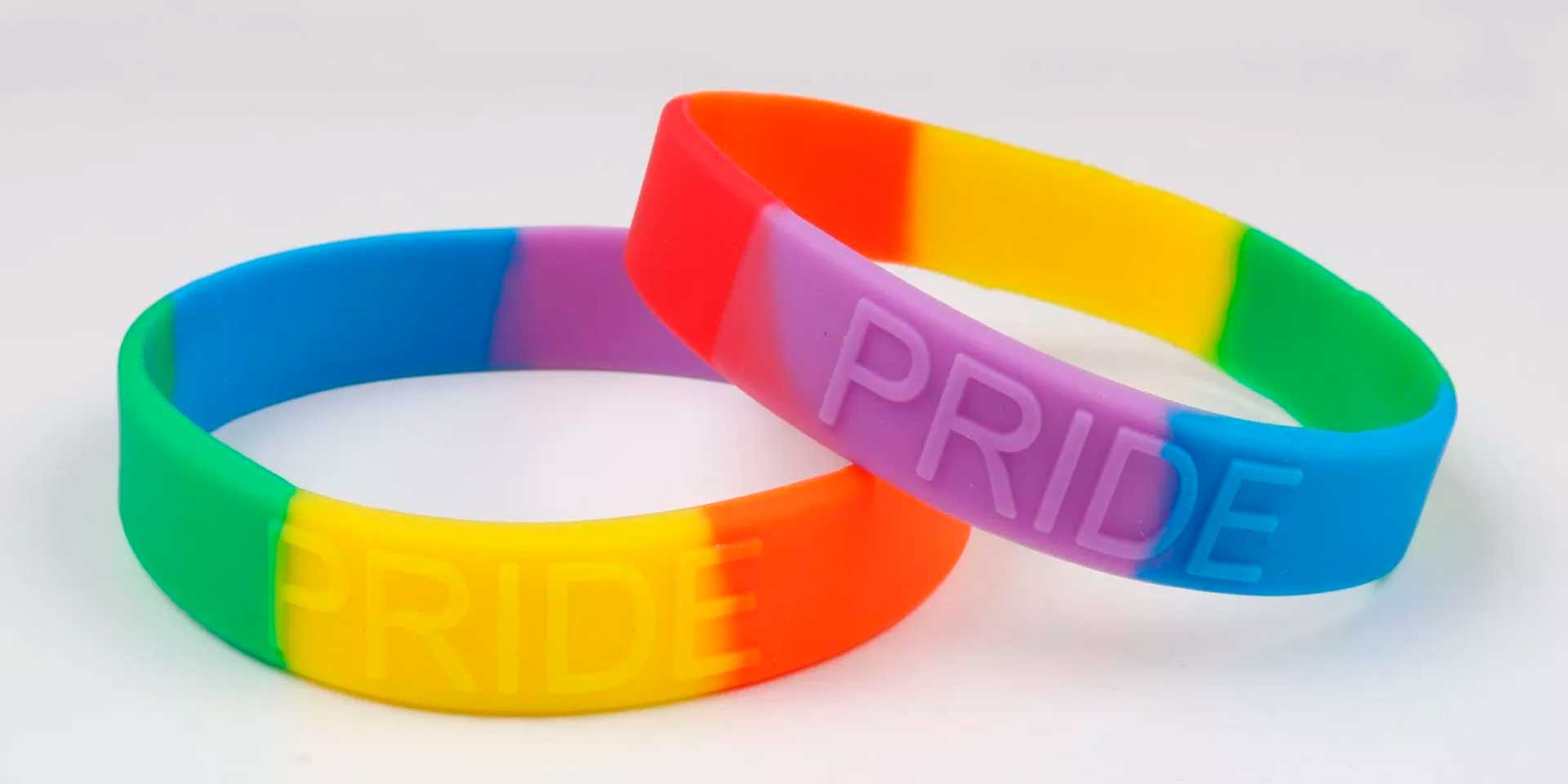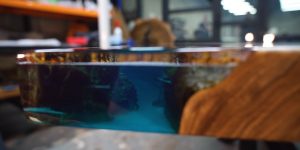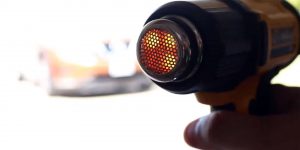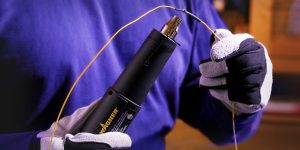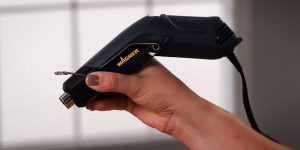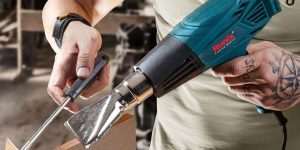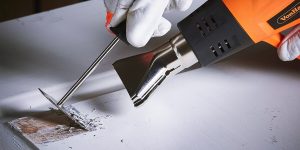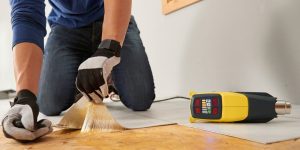Debossing and embossing are two common techniques used in the printing and design industry. They both involve the use of raised and sunken areas on a surface, but they create different effects. But what’s the difference between embossing and debossing? And when should you use each one? Let’s take a look.
What is embossed printing?
Embossed printing is a technique that uses pressure and heat to raise an image or design above the surface of the material. This printing method can be used on many types of paper (including business cards, stationery) leather, fabric, etc.
How is embossing done?
Industrial-level embossing is a perfect way to create professional-looking pieces, but if you’re at home and want the same result then your best bet would be with an embossing machine.
Embossing is done by passing the paper through a set of metal rollers, called dies, that has been engraved with the desired image or design. The paper is fed into the machine and comes out on the other side with a raised design.
Here is how embossing is done using a professional approach:
Create the dies
Dies are used to creating the desired effect on top of an embossed surface. A male die has designs raised while females have them recessed into their plate counterparts, which can be made from magnesium brass copper, or aluminum among other materials depending upon what you want your final look like!
Insert the dies
The dies are then placed inside a giant press, which could be any one of these:
- The clamshell press – this holds the material between two plates as you squeeze it.
- The straight stamping machine – uses leverage to force an imprint onto paper or other substances that come into contact with them;.
- Roll press– this works by feeding sheets through small holes at different angles so they receive multiple layers.
Press the material
The heat from the press embosses a design into paper. The material gets stamped by being pressed between two plates that have been heated to temperatures up exceeding 200°F.
Complete the design
After the printing is complete, the design will be relieved and have a 3D effect.
What are the different techniques of embossing?
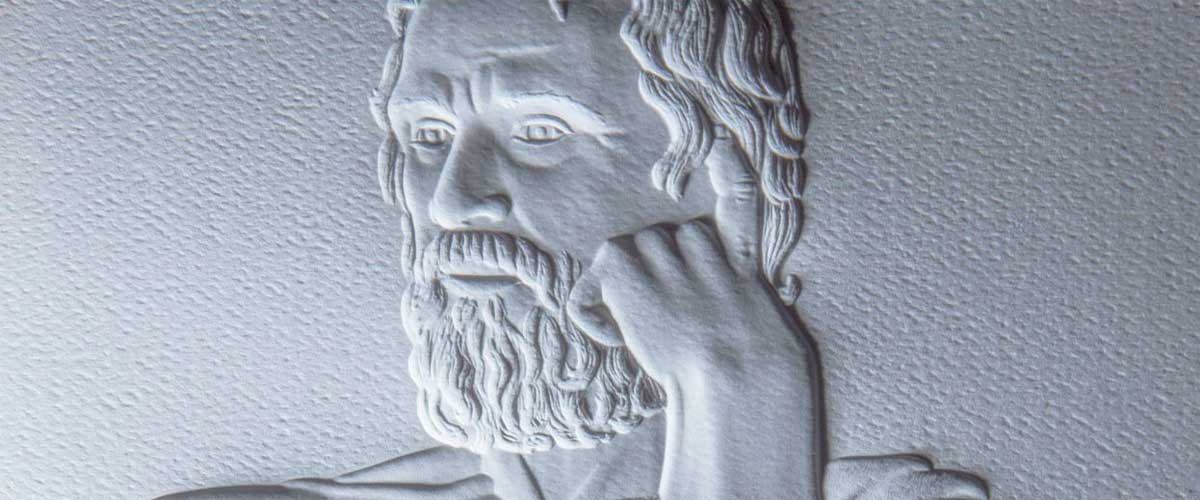
There are different types of embossing, and the one you choose will depend on your project.
Blind embossing
This is the most common type of embossing and is used to create a raised design without using any ink or color. It’s perfect for creating simple yet elegant designs.
Foil embossing
This type of embossing uses a thin layer of foil to create a design. It’s often used for creating more intricate designs or for adding color to an otherwise simple design.
Combination embossing
This is a combination of the two previous types of embossing and is used to create a design that is both raised and foil-stamped.
Pipe embossing
This is a type of embossing that is often used on pipes and other cylindrical objects. It’s done by passing the material through a set of rollers that have been engraved with the desired design.
Registered embossing
This type of embossing is used to create a design that is perfectly aligned with the edge of the paper. It’s often used for creating designs that need to be precise, such as company logos.
Pastelling embossing
This is a type of embossing that uses multiple colors to create a design. It’s perfect for creating colorful designs or for adding a bit of flair to a simple design.
Glazing embossing
It’s a special technique of adding a glaze on top of the design. It’s usually applied to darker-colored business cards or postcards. This embossing type gives the material a more sophisticated look.
Scorching embossing
Scorching is a type of embossing that uses heat to create a design. It’s perfect for creating designs that need to be precise, such as company logos.
What materials can be embossed?
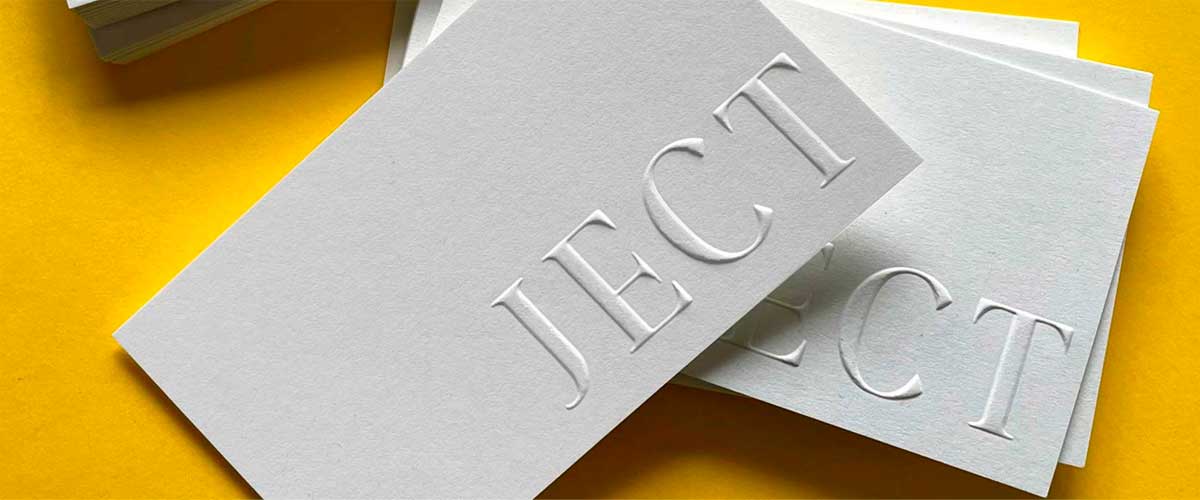
The possibilities for embossing are endless. You can use it on just about any material that is flat and thin, like paper, plastic film, metal foil, wood, textile fabric, stationery, food, leather – even glass!
What is debossed printing?
Debossing is the process of impressing an image or design into paper or other materials using a metal plate. It’s the opposite of embossing, which raises the design above the surface. Debossing creates a sunken effect and is often used to create designs that are more understated and sophisticated.
Like the embossing process, debossing can be done on an industrial level or at home with your own personal die-cutting machine.
How is debossing done?
To create a debossed design, you will need two dies: a male die and a female die. The male die is the one that will do the actual debossing, while the female die is used to create an impression of the design onto the material.
Mold the design
The design or logo seamlessly integrates into the metal plate with no visible outline.
Insert the plate into the press
The plate is placed on a pressing machine, which has been heated to about 200°F. Just like with embossing and debossing, many types of presses can be used, including clamshells or straight stamp machines depending on who performs this task.
Press the material
Once the plate is heated, it’s time to press the material. The material is placed between the two dies and then run through the press. As the material passes through the press, the male die debosses the design into the surface.
Complete the design
After the design has been debossed, it’s often finished with an embossed edge or border to give it a more polished look.
What materials can be debossed?

Like embossing, debossing can be done on just about any flat, thin material including paper, plastic film, metal foil, wood, textile fabric, stationery, food, and leather.
Debossing vs embossing
Now that we’ve gone over the basics of each technique, let’s compare debossing and embossing. Both techniques offer great ways to attract interest to your design, but still, there are differences in production and application. Let’s take a closer look at them.
In production
Debossing on fabric or plastic can be a problem because of heat, while the process of embossing doesn’t have these problems. The amount of heat used for embossing is less than for debossing process. The cost of embossing is higher than debossing.
In application
If you want your design to be more noticeable, go with embossing. The raised design will be more visible and attention-grabbing. If you want your design to be more subtle, go with debossing. The sunken effect will be more understated. If you’re working with a dark-colored material, go with embossing. The raised design will be more visible against the dark background. If you’re working with a light-colored material, go with debossing. The sunken effect will be more visible against the light background.
Here are a few examples of where you might use embossing or debossing in your design:
- Business cards: Embossing can add a touch of luxury to your business cards, while debossing can make them look more sophisticated.
- Letterheads and envelopes: Debossing is a great way to add a subtle logo or design to letterheads and envelopes.
- Books and book covers: Embossing is often used on book covers to create texture and interest.
- Wedding invitations: Debossing is a popular choice for wedding invitations because it adds a touch of elegance.
- Gift certificates and gift cards: Embossing can give gift certificates and gift cards a more premium look.
- Product packaging: Debossing is often used on product packaging to create a subtle brand identity.
Conclusion
More than just an interesting design technique, embossing and debossing are very useful for creating various items. You can use them in scrapbooks or advertising materials to give your product uniqueness!

